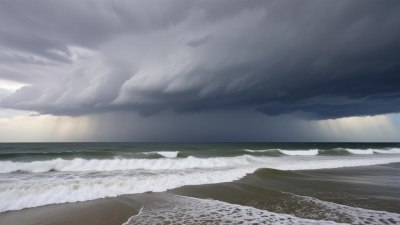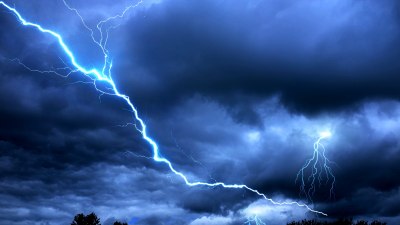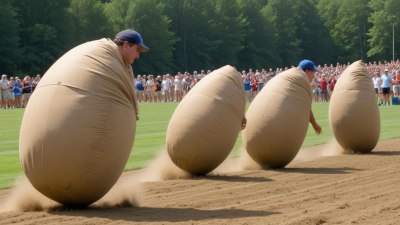What Causes Weather Fronts to Stall
Discover the factors that lead to the stalling of weather fronts and their impacts on local climates.

This image was created with the assistance of Freepik
Weather fronts are boundaries between two different air masses, and their behavior is crucial in determining weather patterns. One particularly interesting phenomenon is when these weather fronts stall, leading to prolonged periods of specific weather conditions. Understanding why weather fronts stall involves examining various atmospheric dynamics, geographic influences, and temperature differences. In this article, we will dive into the factors that contribute to the stalling of weather fronts, the implications of these stalled fronts on weather patterns, and their frequency and seasonal variations.
At the core of understanding stalled weather fronts is the concept of temperature gradients. Weather fronts typically form in areas where warm, moist air meets cooler, denser air. When these air masses collide, the warm air is forced to rise over the cooler air, leading to cloud formation and precipitation. However, several factors can affect the movement of these fronts and cause them to stall. One significant factor is the temperature difference between the two air masses. A strong temperature gradient can lead to a powerful front that moves rapidly, while a weak gradient may result in a front that barely moves.
Another essential aspect to consider is the presence of upper-level wind patterns, particularly the jet stream. The jet stream can either support the movement of weather fronts or hinder their progression. For instance, when the jet stream is positioned in a way that aligns with the front, it can help to propel the front forward. Conversely, if the jet stream is meandering or has a weaker flow, it can lead to a situation where the front stalls. This behavior is often seen during seasons of transition, such as spring and fall, when temperature contrasts are significant.
Geographic Influences on Weather Fronts
The geography of a region can significantly influence the behavior of weather fronts. Mountains, valleys, and large bodies of water can serve as physical barriers that impact the movement of air masses. For example, when a weather front approaches a mountain range, the topography can disrupt the flow of air, causing the front to slow down or even stall as the air is forced to ascend and descend. Such scenarios are common in regions with significant mountain ranges, where the air mass dynamics can be quite complex.
Additionally, large bodies of water can modify the local climate and influence the movement of weather fronts. For instance, coastal areas may experience stalled fronts when warm, moist air from the ocean encounters cooler air over land. The evaporation and condensation processes, along with the heat exchange between land and water, can create localized weather phenomena that further complicate the movement of fronts.
Highs and Lows Influence
The presence of high-pressure and low-pressure systems also plays a crucial role in the stalling of weather fronts. High-pressure systems, characterized by descending air and clear skies, generally lead to stable weather patterns. In contrast, low-pressure systems are associated with rising air and unstable weather conditions. When a low-pressure system is anchored in one location, it can create a scenario where fronts are unable to progress, resulting in prolonged periods of cloudy and rainy weather.
In addition, the interaction between different low-pressure systems can also lead to front stalling. For example, if two low-pressure systems form near each other, they may compete for available moisture and energy, leading to a situation where fronts do not move as expected. This can often result in heavy rainfall and thunderstorms as moisture accumulates in the stalled front.
Effects of Stalled Weather Fronts
The stalling of weather fronts can have several impacts on local weather patterns. One of the most significant consequences is the potential for prolonged periods of precipitation. When a front stalls, moisture-laden air can be forced to rise over a prolonged period, leading to sustained rainfall in the affected area. This phenomenon can result in flooding, particularly in regions that already experience high levels of precipitation.
Furthermore, stalled fronts can also create temperature disparities within regions. For instance, one side of a stalled front may experience cooler temperatures due to the influx of cold air, while the other side may be under the influence of warm, moist air, resulting in significant temperature contrasts. These contrasts can create unstable weather conditions, increasing the likelihood of severe weather events, including thunderstorms and tornadoes.
Seasonal Variations in Stalling Activity
The frequency and intensity of stalled weather fronts can vary by season. During the winter months, the presence of cold Arctic air masses juxtaposed with warmer Gulf air can lead to the formation of stationary fronts. These fronts may linger for extended periods, intensifying winter storms, and contributing to significant snow accumulation in certain regions. Conversely, during the summer months, the stalling of fronts can lead to oppressive heat and humidity, as warm air becomes trapped beneath stationary fronts, creating uncomfortably muggy conditions.
In summary, the stalling of weather fronts is a complex interplay of various atmospheric dynamics, geographic features, and seasonal influences. Temperature gradients, upper-level winds, and the presence of high and low-pressure systems can all contribute to fronts becoming stationary. Understanding these processes is crucial for meteorologists and weather enthusiasts, as stalled fronts can lead to significant weather events and impacts on local climates. By studying the factors that contribute to the stalling of weather fronts, we can improve our forecasting abilities and prepare for the potential consequences of prolonged weather patterns.











